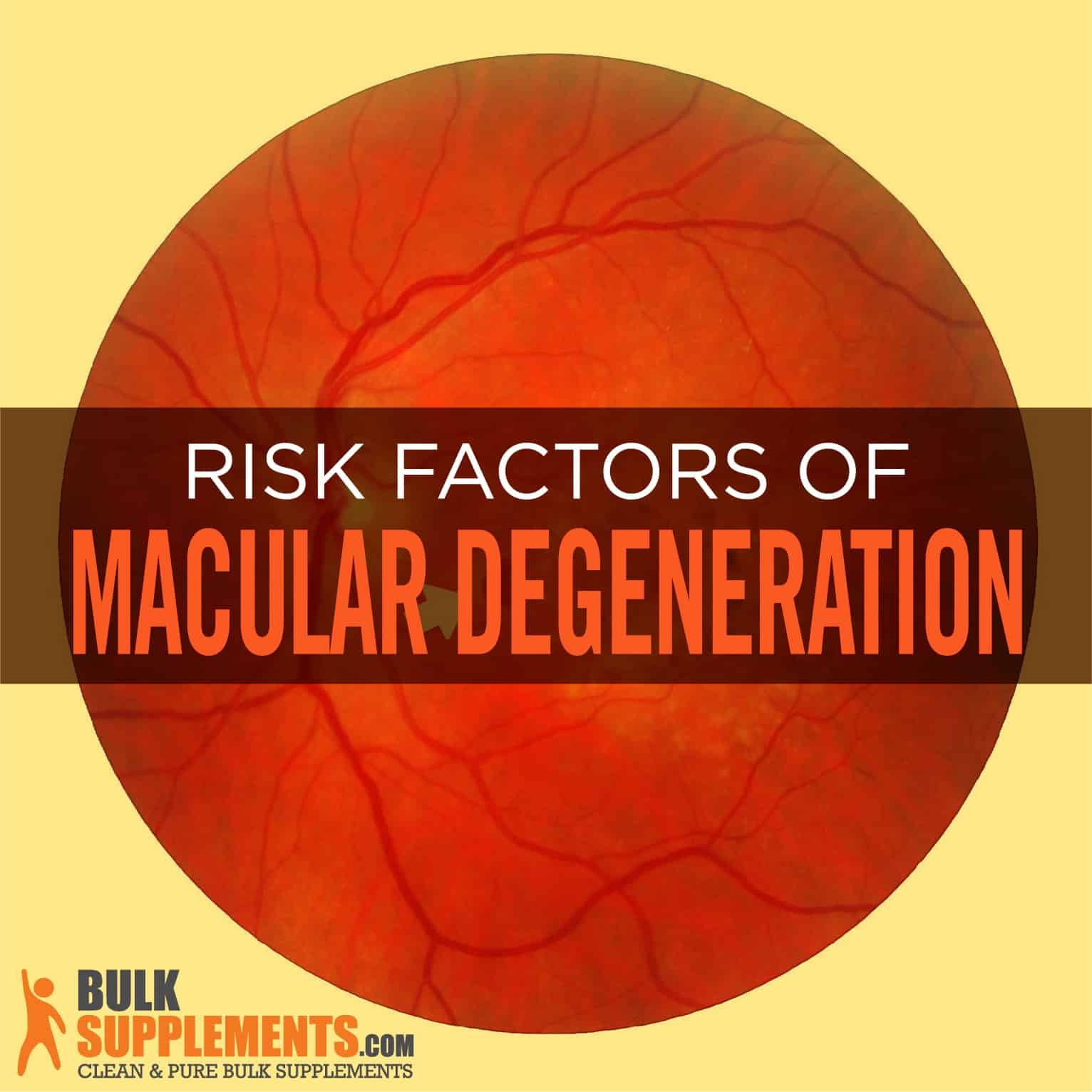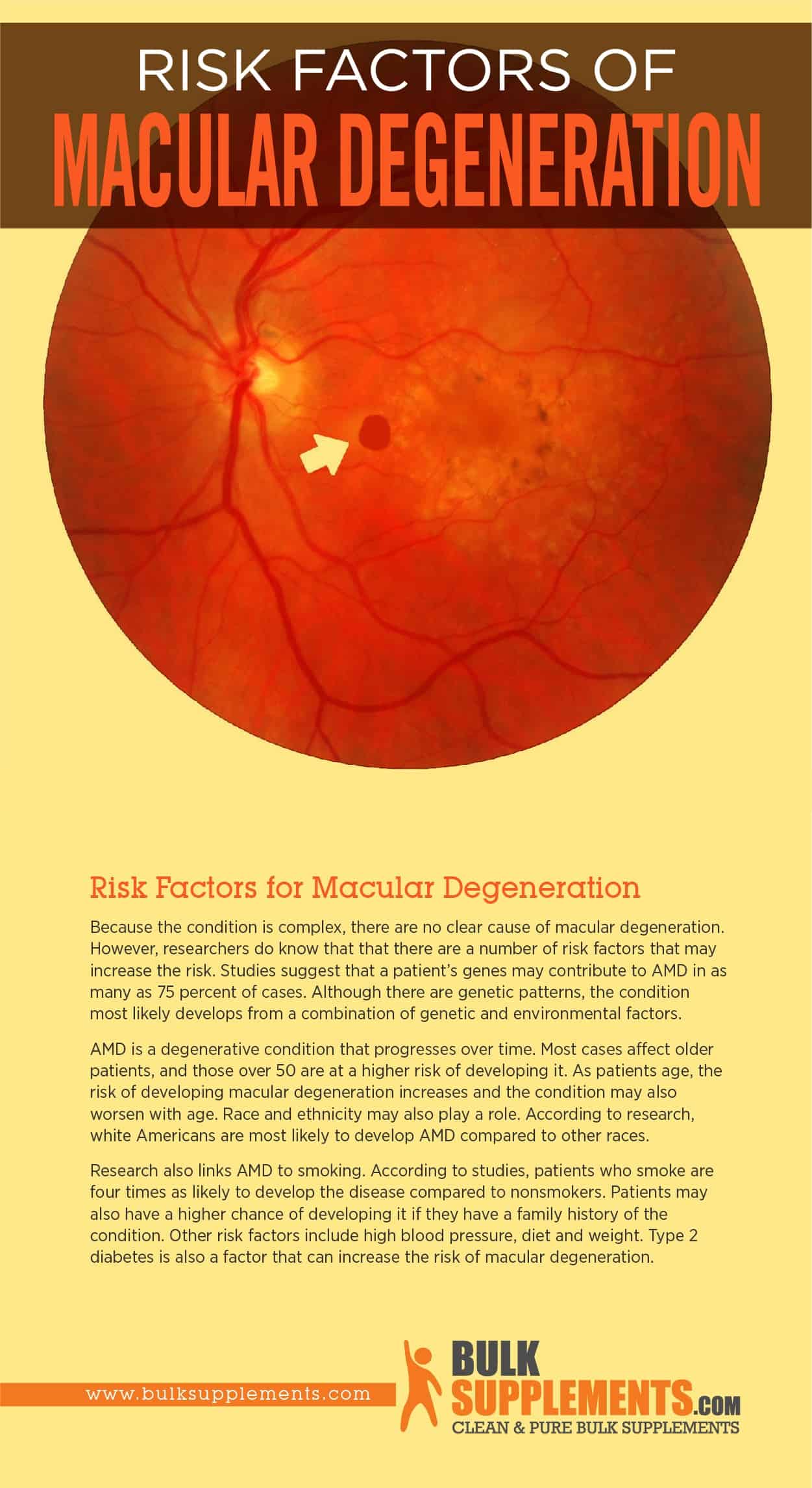Macular Degeneration: Signs, Risk Factors & Treatment
by James Denlinger Digital Marketing Strategist
What Macular Degeneration (AMD)?
Age-related macular degeneration (AMD) is an eye disease that causes central vision loss. Central vision is what the patient can see looking straight ahead, while peripheral vision is what they can see to the sides when they look straight ahead. The macula is the part of the eye that’s responsible for central vision. It is located in the center of the retina at the back of the eye.
Macular degeneration differs from complete blindness in the sense that it does not obstruct peripheral vision. According to studies, over 10 million people in the United States currently live with macular vision. Researchers also consider it the leading cause of blindness because the condition worsens over time. Currently, there is no cure for AMD. However, patients can control the condition with a wide range of treatments including laser therapy and medications.
Signs of Macular Degeneration
The main signs of AMD are changes in vision. An eye care specialist may notice them before the patient is aware of them. The patient may have blurred vision, difficulty seeing details in low light or hypersensitivity to glare. The patient may also have trouble seeing lines on printed pages and straight lines may look wavy or blurry.
Types of Macular Degeneration
Researchers have identified two types of macular degeneration: atrophic (“dry”) and exudative (“wet”). There is also another form of the condition called Stargardt disease.
Atrophic (“Dry) AMD
When macular degeneration develops, it usually causes distortion that patients may notice when they read. Patients typically have good central vision but experience limitations. For example, central vision is limited to certain areas, making it difficult to read or see at night and vision often fluctuates. Dry AMD is much more common, characterizing 85 to 90 percent of cases.
Exudative (“Wet”) AMD
This type of macular degeneration only characterizes between 10 and 15 percent of AMD cases. The patient develops abnormal blood vessels under the macula and the retina. The blood vessels leak fluid into the retina, which distorts the patient’s central vision. It makes straight lines look wavy, causes blind spots and may lead to central vision loss very quickly. The blood and fluid forms a dark, wet-looking spot in the middle of the patient’s vision.
Stargardt Disease
Although macular degeneration is an age-related condition, in rare cases it can develop in children or teenagers. Stargardt disease is the most common cause of AMD in young patients. Patients start to notice difficulties reading or adjusting to bright lights, usually between ages 6 and 20. However, unlike AMD Stargardt disease is a genetic condition from a recessive trait.
Stages of Macular Degeneration
Researchers have identified three stages of AMD. Researchers define these stages by the patient’s vision and the amount of drusen beneath the retina. Drusen are tissue deposits from the retina made up of lipid proteins. It does not cause AMD, but large amounts of it plays a role in how the condition progresses.
Early Stage
In the early stages, the patient has medium-sized drusen deposits. However, the patient does not notice vision loss or changes in pigment.
Intermediate Stage
In intermediate stages, the patient has large drusen deposits or changes in pigment in the retina. Sometimes the patient has both symptoms. Like early AMD, the patient may not notice the changes.
Late Stage
Along with large drusen deposits, the late stage also causes significant damage to the macula and noticeable vision loss. In this stage, physicians categorize the condition as atrophic (“dry”) or exudative (“wet”). Physicians also state that dry AMD progress much faster than wet AMD.
Not all patients with early AMD will develop late AMD. There are different factors that determine how the disease progresses. During the early stages, macular degeneration may produce very few symptoms that the patient often overlooks and they may fail to get treatment. This is why it is important for patients to have regular eye exams, especially if they have any risk factors that may contribute to it.
Risk Factors for Macular Degeneration
Because the condition is complex, there are no clear cause of macular degeneration. However, researchers do know that that there are a number of risk factors that may increase the risk. Studies suggest that a patient’s genes may contribute to AMD in as many as 75 percent of cases. Although there are genetic patterns, the condition most likely develops from a combination of genetic and environmental factors.
AMD is a degenerative condition that progresses over time. Most cases affect older patients, and those over 50 are at a higher risk of developing it. As patients age, the risk of developing macular degeneration increases and the condition may also worsen with age. Race and ethnicity may also play a role. According to research, white Americans are most likely to develop AMD compared to other races.
Research also links AMD to smoking. According to studies, patients who smoke are four times as likely to develop the disease compared to nonsmokers. Patients may also have a higher chance of developing it if they have a family history of the condition. Other risk factors include high blood pressure, diet and weight. Type 2 diabetes is also a factor that can increase the risk of macular degeneration.

Macular Degeneration Treatment
There is no cure for age-related macular degeneration, but there are different treatment regimens that patients can follow to manage symptoms and slow progression. Doctors may also structure the treatment regimen based on the stage and type of the disease.
Nutritional Therapy
Early stages of dry AMD does not result in vision loss, but it does cause limitations. Typically patients can address the condition at this stage with nutritional therapy. Patients need a healthy, balanced diet with antioxidants, carotenoids and fatty acids to help protect the eyes. Physicians may also recommend supplements to help.
Laser Therapy
In this procedure, a doctor uses a thermal laser to destroy the damaged blood vessels under the macula. When it burns the vessels, it reduces fluid buildup and helps maintain vision. However, this therapy is temporary because the damaged vessels may return and this type of therapy may even cause damage to the macula. This treatment can be risky, but new research has discovered how it may potentially address AMD in the early stages.
Anti-VEGF Drugs
Anti-VEGF medications can help wet AMD. It stands for “vascular endothelial growth factor” and they are injectable drugs that aim to reduce fluid in the macula. It can also help reduce abnormal blood vessels and stop new ones from growing. Macugen, Lucentis, Avastin and Eylea are three types of anti-VEGF drugs.
Supplements for Macular Degeneration
Medical experts may recommend supplements for patients to take as well alongside other medications or treatment procedures. There are several benefits of using supplements. For example, they may help slow down the progression rate and keep the eyes healthy for longer. However, consult a doctor before taking any supplements for macular degeneration. They do not cure this disease or any other, but they may help improve eye health.
Lutein
Lutein is an important nutrient that research claims supports eye health. It may help prevent macular degeneration and possibly even reduce cataracts. According to studies, patients may have less risk of developing cataracts if they have more lutein in their systems. As a dietary supplement, take lutein 5% powder in 100 to 400 mg doses once a day, if a doctor approves.
Bilberry Extract
Bilberry is in the same family as blueberries and cranberries. Like blueberries, bilberry is a great source of antioxidants that can help protect the body from free radical damage. Free radical molecules cause oxidative stress on the body that can increase the risk of disease, including diabetes and Alzheimer’s disease. Bilberry may also help prevent macular degeneration and vision loss, but there is not enough research to label it as an effective treatment. As a dietary supplement, the recommended serving size for bilberry extract powder is 400 mg (about 1/4 tsp) once or twice a day with a meal, unless a physician advises against it.
Zeaxanthin
Zeaxanthin is a carotenoid, which are molecules that produce plant pigments. Specifically, zeaxanthin produces the yellow pigment in corn, saffron, wolfberries and paprika. It is also present in the retina. It may help prevent age-related eye diseases or help control the symptoms once they appear. As a dietary supplement, the recommended dosage for zeaxanthin 5% powder is 100 mg one or two times a day, or following a doctor’s instructions. Because this supplement contains 5% zeaxanthin, one 100 mg dose contains 5% zeaxanthin. Use a milligram scale for accurate measurement.
The Bottom Line
Macular degeneration is one of the leading causes of blindness. It is an age-related condition that causes central vision loss. In its early stages, patients may not notice any changes in vision, but signs include blurred and distorted vision, difficulty reading print and sensitivity to glares. There are three stages of the condition characterized by how the disease progresses and the amount of drusen behind the retina. As AMD progresses to the late stage, physicians divide it into two categories: “wet” and “dry.”
There is no definitive cause for AMD, but it is likely a combination of genetic and environmental factors, such as smoking or diabetes. AMD also does not have a specific cure, but there are treatment methods that can help slow progression and maintain vision. Doctors may also recommend supplements to keep patients’ eyes healthy. However, supplements do not treat macular degeneration or any other condition. Instead, they aim to help improve vision.
Sponsor Ads
Created on Mar 2nd 2020 12:57. Viewed 263 times.



